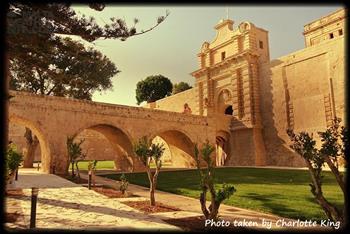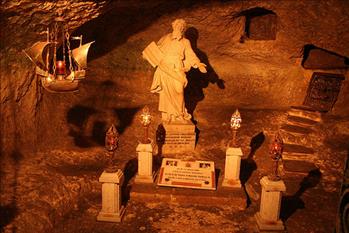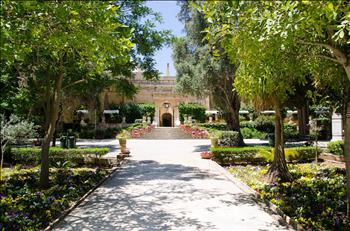Rabat, Mdina & San Anton Gardens
San Anton palace is a palace in Attard, which is the official residence of tthe President of malta. It was originally built in the early 17th century as a country villa for Antoine de Paule, a knighth of Orderof St. John. It was expanded into a palace following de Paule's election as Grand Mastersin 1623. The palace was the headquarters of the rebel National Assembly during the uprising of 1798-1800, and it laterbecame a residece for the Cvil Commissioners, Governos and Governos-General of Malta. It has been the official residence of the president since the officeb was created in 1974. The palace is surrounded by the extensive San Anton Gardens, parts of which have been open to the public since 1882. During this tour we will first visit the Garden and then continue to the next stop which is Rabat.
Rabat is a town in the Northern Region of Malta. The name of the town is derived from the Arabic word for 'suburb' as it was the suburb ofthe old capital Mdina. Rabat is home to the famous Catacombs of St. Paul. These catacombs were used in Roman times to bury the dead as, according to Roman culture, it was unhygienic to bury the dead in the city Mdina and parts of Rabat were built on top of an ancient Roman City. The maltese Catacombs were never meant to be hiding places during perrsecutions or as living quarters. The Catacombs of St. paul are now looked after by Heratige Malta. Part of St. paul's Catacombs, the part accessible from the parish Church which is dedicated to the same Saint, was where, according to traditionand as recorded in the Bible, St. Paul stayed for three months when he was shipwrecked on the island in 60 A.D.
Our next final stop is Mdina. Mdina also known by its titels Citta' Vecchia or Citta' Nobile, is a fortified city in the Northern Region of Malta, which served as the islannd's capital from antiquity to the medieval period. The City is still confined within its walls, and has a population of just under 300. The city was founded as Maleth in around the 8th century BC by Phoenician settlers, and was later renamed Melite by the Romans. Ancient Melite was larger than present-day Mdina, and it was reduced to its present size during the Byzantine or Arab occupation of Malta. During the latter period, the city adopted its present name, which derives for the arabic woord medina. The city remainded the capital of Malta throughout the Middle Ages, until the arrival of the Order of St. John in 1530, when Birgu became the adminstrative centre of the island. Mdina experienced aperiodof decline over the following centuries, although it saw a revival in the early 18th century. At this point, it acquired several Batoque features, although it did not lose its medevial character. Mdina remained the centre of the Maltese nobility and religious authorities, but it never regained its pre-1530 importance, giving rise to the popular nickname the "Silent City" by both locals and visitors. Mdina is on the tentative list of UNESCO worlld Heratige Sites, and it is now one of the main tourist attraction in Malta.
___________________________________________________________________________________________________________________________________________________________________________________
Reservations for this trip can be done online from this site at least 4 working days in advance or by visiting a Central Holidays Office in Paceville, St. Julian’s.
A deposit of € 10 or as otherwise stated will secure your reservation.
Addresses:-
Central Holidays
134, St. George’s Road, Paceville – St. Julian’s – STJ 3203
Book Now
‘Website Time Limit Exceeded’ or ‘Trip out of Season’ for reservations and further details please visit a ‘Central Holidays Office’, in Paceville – St. Julian’s or Qawra – Bugibba area.
Other Details
Price Includes :-
- Pick - up and Drop - off from Hotel
- Half Day Excursion to San Anton Gardens, Rabat & Mdina
- St. paul's Catacombs Ticket
The exact pick up time and pick up piont will be confirmed when the original tickets are picked up from one of our offices.






